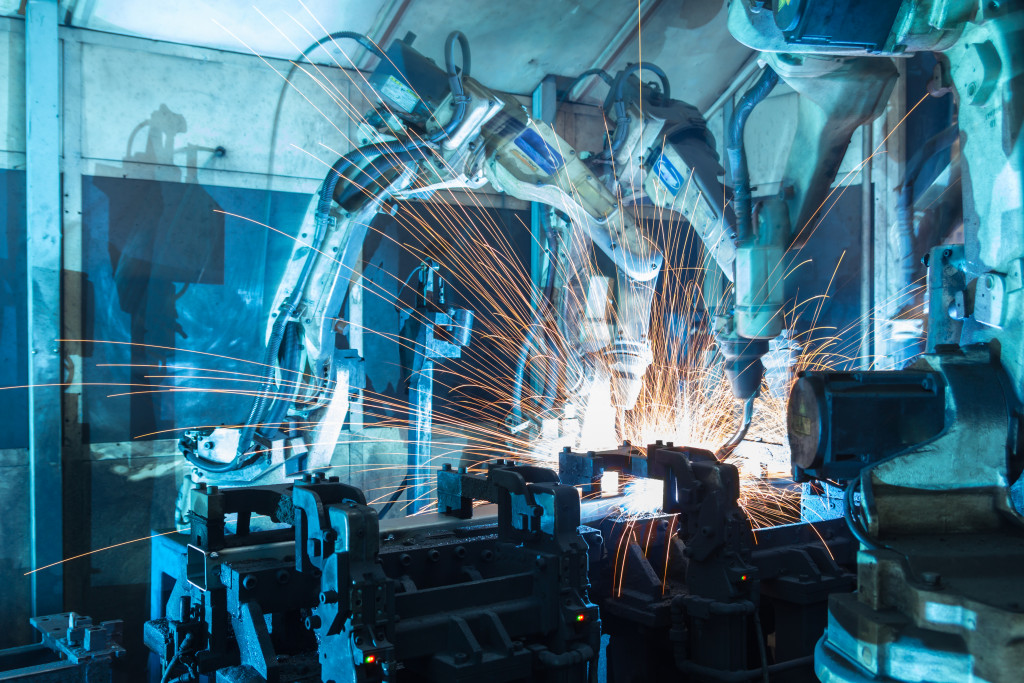For many years, robotics in manufacturing and other labor-intensive tasks has been on the rise. But what are the benefits of using robotics in these settings? In this article, we will explore some ways that robotics can streamline these tasks and make them more efficient.
Saves Time
Robotics has long been heralded as a way to save time and labor by automating repetitive tasks. This is especially true in manufacturing and other industries where large volumes of products must be assembled with consistent precision. But as robotics technology has become more sophisticated, it is increasingly being used in a wider range of applications. For instance, agricultural robots are being developed to plant, water, and harvest crops, freeing farmers from the backbreaking work done by hand. Robots are being used to assist surgeons and perform other delicate procedures in the healthcare industry. And in the hospitality industry, robots are being deployed as concierges and room service attendants. As these examples illustrate, robotics is beginning to revolutionize the world of work by streamlining labor-intensive tasks traditionally done by human beings.
Improves Quality
Robotics technology significantly impacts labor-intensive tasks across industries, improving quality while streamlining workflows. In manufacturing, for instance, industrial robots are increasingly being used to handle tasks such as welding, fabricating, and assembling parts. These robotic hands work with the help of supreme-quality pneumatic actuators. The actuators are filled with gas which is controlled by software systems. When the gas is released, the robotic hands start performing their task, and as it is stopped, the hands stop working as well. Hence, with the help of pneumatic actuators, robotics is capable of automating certain tasks. This helps to improve the quality of products, speeds up production times, and reduces costs. Similarly, in the healthcare industry, robots are being used to assist surgeons with delicate procedures. This reduces the risk of human error and allows surgeries to be completed more quickly and with fewer complications. As robotics technology continues to evolve, labor-intensive tasks will likely be automated in the years to come.
RPA Software to the Rescue
Robotics study robots and their design, manufacture, application, and structural disposition. It comes under the branch of engineering and deals with the creation of robots and their control systems. Robotics is used in various industries to automate repetitive and labor-intensive tasks. RPA software is one such application of robotics used extensively to streamline business processes. RPA software mimics human actions to perform data entry, form filling, etc. This not only saves time but also reduces errors associated with manual tasks. RPA software is helping businesses to optimize their processes and improve their bottom line. Robotics is consequently revolutionizing how businesses operate and setting new standards for efficiency and productivity.

The use of robotics is growing rapidly as businesses look for ways to streamline labor-intensive tasks and improve quality. Robotics technology is becoming more sophisticated and used in a broader range of applications. RPA software is one such application of robotics that is helping businesses to optimize their processes and improve their bottom line. Robotics is consequently revolutionizing how businesses operate and setting new standards for efficiency and productivity.
Provides Safety
Robotics provides an ever-growing list of solutions for labor-intensive tasks across a broad range of industries. From retail to automotive manufacturing, robotics is becoming the go-to technology for increased efficiency and safety in the workplace. Robots are being used to handle inventory in retail environments, freeing up employees for other tasks. In factories, robots are being used to perform repetitive and dangerous tasks, such as welding and handling heavy materials. Robots are even extending into personal care, with robots now being used to assist the elderly and disabled. As robotics technology continues to evolve, it is clear that it will profoundly impact the way we live and work.
Reduces Costs
The deployment of robotics has helped companies automate various tasks that human workers would traditionally perform. One of the most significant benefits of robotics is that it can help to reduce costs. Robots can work around the clock and do not need breaks, meals, or vacations. This has had several benefits, including reducing labor costs and increasing efficiency. In many cases, robotics has also helped improve workers’ safety conditions. For example, robots are often used in dangerous or high-risk environments, such as manufacturing and construction industries. By using robotics to perform these tasks, companies can minimize the risk of injuries to employees. In addition, robotics can also help reduce the overall labor cost by automating repetitive and low-skilled tasks. As a result, the use of robotics is likely to continue to grow in popularity in various industries in the years to come.
Robotics technology is revolutionizing the way businesses operate by automating labor-intensive tasks. RPA software is one example of how robotics can streamline business processes. Robotics provides increased efficiency and safety in the workplace and can help reduce costs. The use of robotics is likely to grow in popularity in various industries in the years to come. Thanks to robotics, businesses can optimize their processes and improve their bottom line.

